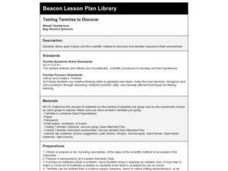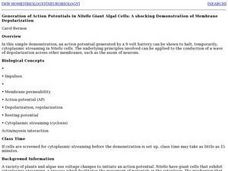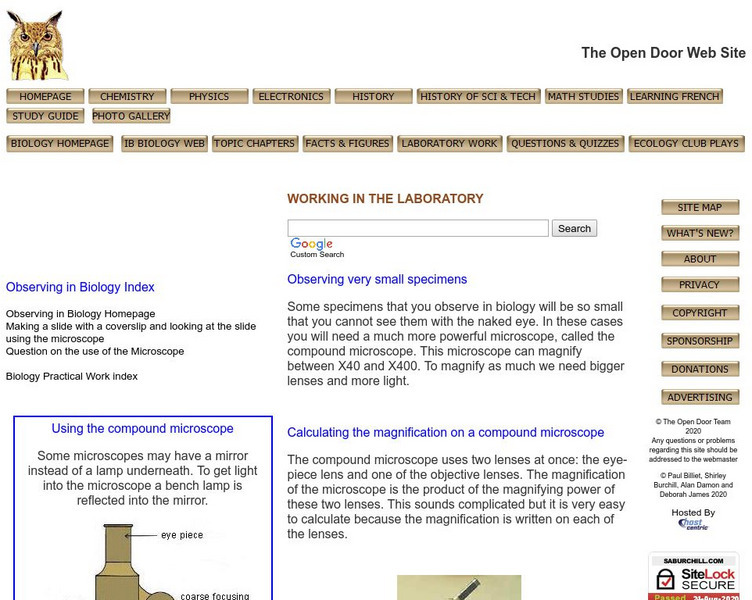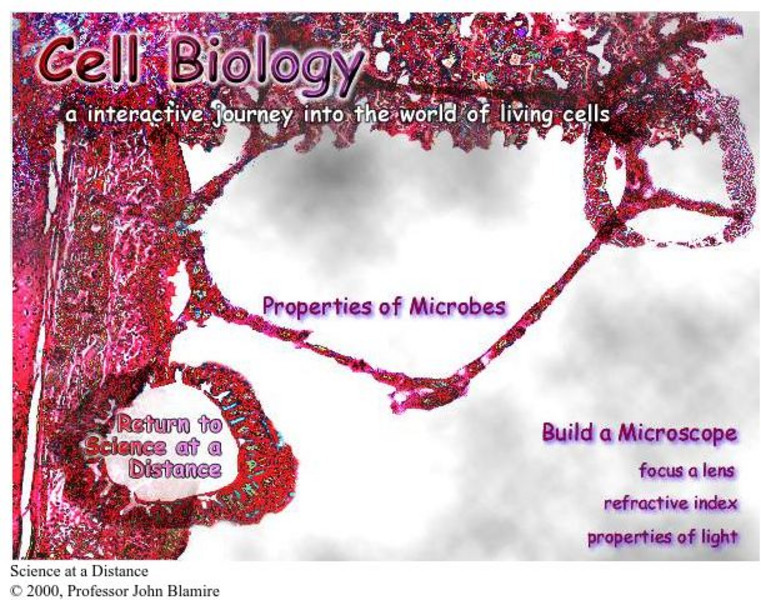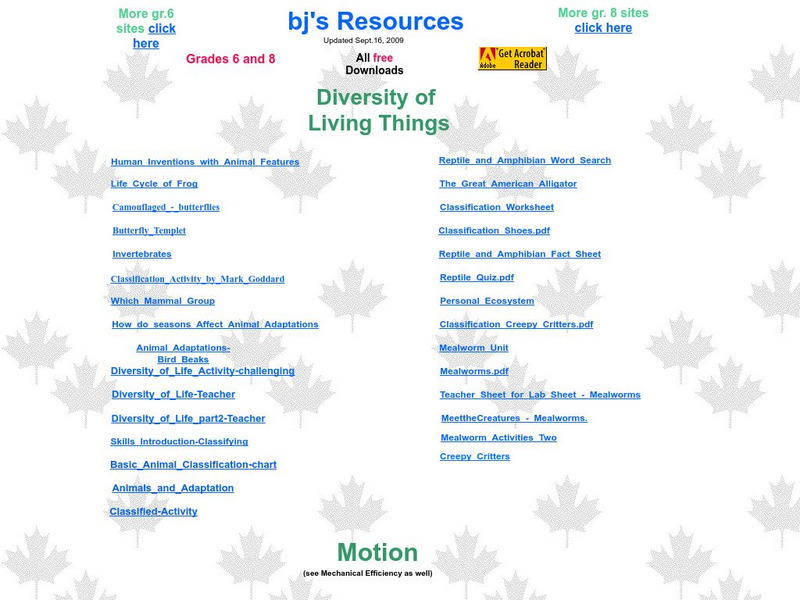Curated OER
Pyrites
Students examine the mineral pyrite and discover the differences between it and gold. In this mineral activity students identify minerals using their common properties.
Curated OER
Dishing the Dirt Part 1
Students create a soil center on their school grounds. They begin to write in their science journals. They participate in an experiment that helps the community begin their own gardens.
Curated OER
Seeing Cells
Sixth graders study living cells and their functioning units. In this cell lesson students color cell diagrams, answer questions and discuss the differences between plant and animal cells.
Curated OER
Using Magnetotactic Bacteria to Study Natural Selection
Students demonstrate that living organisms may possess incredible adaptations which enable them to survive. They observe bacteria that are able to orient themselves using the Earth's magnetic field and formulate a hypothesis as to how...
Curated OER
Wacky Water Critters
Students recognize the biodiversity that exists in a wetland ecosystem. They identify individual wetland organisms. Students define, identify, and comprehend the importance of adaptations. They describe the process of metamorphosis.
Curated OER
Bioremediation
Students design and conduct investigations that illustrate the effect bioremediation has on organic matter and determine environmental applications. They, in groups, present their findings to the class.
Curated OER
Testing Termites to Discover
Students design an experiment to discover how termites respond to their environment.
Curated OER
Generation of Action Potentials in Nitella Giant Algal Cells
Students observe cytoplasmic streaming in Nitella cells. They examine the conduction of a wave of depolarization across other membranes, such as the axons of neurons. Students predict the effects of sending a small electric current...
South Carolina Educational Television
Know It All: Microscope | Hobby Shop
In this activity, students use a virtual biology lab to perform investigations and learn lab procedures using compound and dissecting microscopes to look at a variety of animal and plant cells.
Open Door Team
Open Door Web Site: Biology: Calculating Magnification on a Compound Microscope
Learn how to calculate the total magnification of a microscope on this concise site. Links to making a slide, questions on the use of the microscope, and other related microscope topics are included on this site.
Other
Science Spot: Microscope Mania [Pdf]
This is a lab station lesson plan on microscopes (7th grade). There are several supplemental documents available to accompany this lab at: http://sciencespot.net/Pages/classbio.html - Click on Microscope Mania.
Science Education Resource Center at Carleton College
Serc: Lab 2: Anatomy of Coral
A lab experiment in a series of experiments that investigates coral. In this activity, students will use a microscope to examine the feeding behavior of a hydra, a fresh-water relative of coral. They will also observe the characteristic...
University of Missouri
Microbes in Action: Classroom Activities: Simple Staining of Microbes [Pdf]
With this simple stain, students can observe the shape of yeast and bacteria under the microscope. Lesson plan gives a lab procedure, teacher instructions, points for discussion, and additional activities. Lab does require the purchase...
City University of New York
Cell Biology: An Interactive Journey
This interactive website about microscopes and microbes provides students with an introduction to cellular biology.
My Science Site
Bj's Science: Microscope Test [Pdf]
Site is a brief test teachers can use to assess student knowledge of a microscope. No answers are provided.
NASA
Microbes @ Nasa: Science Lesson Plan: Day One Microscope Activity [Pdf]
A middle school experiment on the cell structure of cyanobacteria.
My Science Site
My Science Site: Cell Center Activities [Pdf]
Site provides six possible center activities for teachers to use to engage students in the study of cells.
My Science Site
Life Systems: Cells, Tissues, Organs
Extensive site for teachers provides some helpful resources that pertain to plant and animal cells. Includes a microscope diagram as well as plant, animal and pond labs. Also contains links to structures and mechanisms, matter and...
Huntington Library
Huntington Library: Garden Lesson Plans: Investigation: Pollen Collection [Pdf]
After learning about what pollen is, its health effects, as well as how it benefits humans, students take part in a lab activity. For this, they collect schoolyard pollen on slides, stain it, and then examine it under a microscope.
My Science Site
Bj's Science: Microscope Diagram [Pdf]
Site is simply a picture of a microscope that has numbers that correspond with each part of it. No answers are provided. A good reproducible if you are looking for a detailed view of the different microscope parts.
Department of Defense
Do Dea: Biology: Unit 3: Cell Structure
In this third unit of a Biology course, students learn about cells and cell structure. They compare prokaryotic and eukaryotic cells and learn about the specialized structures in a cell and what their functions are. They will also learn...









